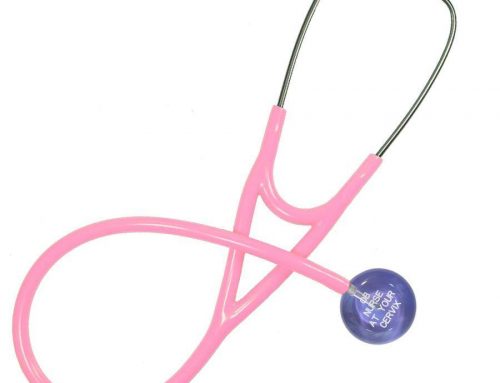There are four major causes of hypertension, or high blood pressure during pregnancy:
Firstly, you may have started your pregnancy with pre-existing high blood pressure.
This is known as chronic hypertension. It is defined as a blood pressure ≥140/90 mmHg diagnosed before pregnancy or before the 20th week of pregnancy.
Hypertension can also develop in your pregnancy. This is called gestational hypertension or transient hypertension – Women with gestational hypertension have all of the following:
•Blood pressure ≥140/90 mmHg
•No protein in the urine (no proteinuria)
•Pregnancy of at least 20 weeks duration
•No previous history of high blood pressure
Pre-eclampsia is a disease unique to pregnancy. Most women with pre-eclampsia develop hypertension gradually and have excess protein in the urine, or proteinuria. Some women develop hypertension and other signs of the disease (eg, low platelet count) without developing proteinuria. Signs of pre-eclampsia can appear anytime during the last half of pregnancy, that is after 20 weeks of pregnancy, or in the first few days after delivery. Pre-eclampsia can also superimpose upon chronic hypertension.This occurs when a woman with chronic hypertension develops signs of pre-eclampsia after the 20th week of pregnancy.
Over time, some pregnant women with gestational hypertension will develop proteinuria or other signs of pre-eclampsia and be considered pre-eclamptic, while others will be diagnosed with chronic hypertension because of persistently high blood pressure three months after delivery. If you have chronic hypertension you will need to be on treatment. If you were already taking anti-hypertensive medication it is important to inform your healthcare provider at your first visit as your medication may need to be changed to something safe in pregnancy.
PRE-ECLAMPSIA
Pre-eclampsia is characterized by the new onset of hypertension and proteinuria after 20 weeks of gestation. Some patients have new-onset hypertension with end-organ dysfunction which can affect organs such as the liver, kidney, platelets, lungs, brain and even the placenta. Pre-eclampsia is sometimes called by other names, including toxemia and pre-eclamptic toxaemia and occurs in up to 4% of pregnancy. The majority of cases occur after 34 weeks and mostly after 37 weeks of gestation. A woman is said to have eclampsia if she has one or more seizures and has no other conditions that could have caused the seizure.
Women with one or more of the following characteristics are at increased risk for developing pre-eclampsia:
●First pregnancy (excluding miscarriages and abortions)
●Chronic hypertension, kidney disease, lupus, or diabetes prior to pregnancy
●Gestational diabetes
●Multiple gestation (eg, twins or triplets)
●A family history of pre-eclampsia in a sister or mother
●A previous history of pre-eclampsia
●Age under 20 years and possibly age over 35 to 40 years
●Obesity
The cause of pre-eclampsia is not yet completely understood but is associated with abnormalities in the development of blood vessels of the uterus and placenta very early in pregnancy that appear to initiate a cascade of events that eventually cause pre-eclampsia. Signs and symptoms of pre-eclampsia occur, in part, due to changes inside the small arteries that decrease blood flow to major maternal organs such as the kidney, brain, and liver, as well as the placenta. Many women with pre-eclampsia have no symptoms of the disease. For this reason, prenatal visits to check for signs of the disease (high blood pressure, protein in urine) are scheduled frequently in the last half of pregnancy.
The disease can affect both mother and fetus:
Most women with pre-eclampsia have mildly high blood pressure and a small amount of excess protein in the urine and do not experience any symptoms of the disease. Most of these women never develop more serious features of the disease; however, pre-eclampsia can worsen. This usually occurs over several days to weeks, but may occur more quickly. Severe features of pre-eclampsia consist of one or more of the following signs or symptoms. The symptoms may be subtle, so patients should not hesitate to mention any concerns about possible symptoms of pre-eclampsia to their healthcare provider.
Symptoms that pre-eclampsia has progressed to the severe stage of the disease include:
●Persistent severe headache
●Visual problems (blurred or double vision, blind spots, flashes of light or squiggly lines, loss of vision)
●New shortness of breath (due to fluid in the lungs)
●Pain in the mid- or right-upper abdomen similar to heartburn
Signs that pre-eclampsia has progressed to the severe stage of the disease:
●Blood pressure ≥160/110 mmHg. Women with blood pressures in this range have an increased risk of stroke.
●Abnormal kidney tests (eg, serum creatinine >1.1 mg/dL)
●Low platelet count (<100,000)
●Liver abnormalities (detected by blood tests)
●Pulmonary edema (fluid in the lungs)
Pre-eclampsia can impair the ability of the placenta to provide adequate nutrition and oxygen to the baby, which can have the following effects to be noted on ultrasound examination:
●Slowed growth of the baby
●Decreased amount of amniotic fluid around the baby
●Decreased blood flow through the umbilical cord, noted on Doppler tests.
CAN PRE-ECLAMPSIA BE PREVENTED? — There are no tests that reliably predict who will get pre-eclampsia, and there is no way to completely prevent it. Doctors may recommend that women who have risk take low-dose aspirin to reduce this risk.
Risk factors for developing pre-eclampsia include:
●A previous pregnancy with pre-eclampsia, especially early onset and with an adverse outcome
●Multifetal gestation
●Chronic hypertension
●Type 1 or 2 diabetes mellitus
●Renal disease
●Autoimmune disease (antiphospholipid syndrome, systemic lupus erythematosus)
HOW IS PRE-ECLAMPSIA TREATED?
The only cure for pre-eclampsia is delivery of the baby and placenta. The management of pregnancies complicated by pre-eclampsia depends on the gestational age and whether severe features of the disease are present. The method of depends upon a number of factors but in most situations, vaginal delivery is possible. If pre-eclampsia develops before term and there are no severe features of the disease, it may be possible to delay delivery to allow the baby more time to grow and mature. However, if severe features of pre-eclampsia develop, delivery is often necessary to prevent complications in the woman or her baby.
After delivery, high blood pressure and protein in the urine should resolve within a few days. However, even after pre-eclampsia resolves, women who had pre-eclampsia are at higher risk for developing cardiovascular disease later in life than women who did not have pre-eclampsia. Some women will require a high blood pressure medication after being discharged from the hospital. This can be discontinued when the blood pressure returns to normal levels, usually within six weeks. Women who do not develop pre-eclampsia in their first pregnancy are at low risk of developing it in a subsequent pregnancy.
Women with pre-eclampsia without severe features of the disease near term have only a 5 percent chance of developing it again. However, women who developed severe features of pre-eclampsia and were delivered before 30 weeks gestation have up to a 70 percent chance of pre-eclampsia in future pregnancies.

Yours in health
Dr Leneque Lindeque (MBChB, FCOG(SA), Mmed (O&G)
Obstetrician and Gynaecologist
Netcare Alberlito Hospital
Ballito
Tel: (032) 586 0723






